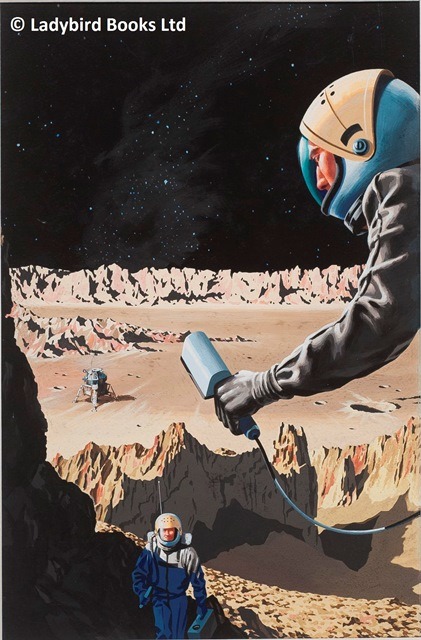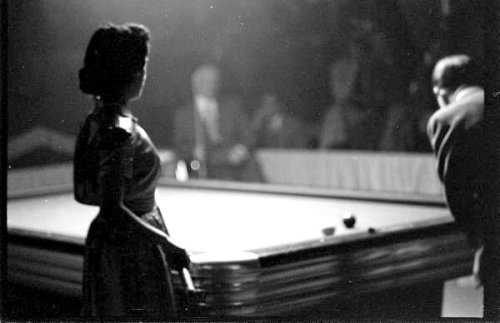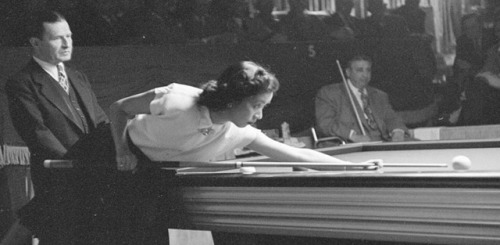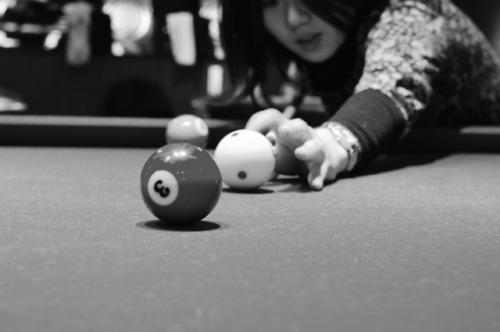Liu Chuyu Was The First-born Daughter Of Emperor Xiaowu And His Empress, During The Liu Song Dynasty.

Liu Chuyu was the first-born daughter of Emperor Xiaowu and his empress, during the Liu Song dynasty. Never heard of it? Neither had I. Lasting just 60 years in the 400s CE, it was one of the four southern kingdoms which succeeded the Eastern Jin Empire. While it was going, the Liu Song dynasty ruled most of southern China, but a string of incompetent or tyrannical emperors led to internal instability and the dynasty’s quick downfall.
Luckily for her, Liu Chuyu was born during a relatively stable period. Her father became Emperor Xiaowu by force, but his reign was more or less stable, and he died of natural causes when she was 17 or 18. The transition of power was bloodless and his son, Liu Chuyu’s younger brother, followed Emperor Xiaowu upon the throne.
Before he died, her father married her to He Ji, son of a prominent official. Liu Chuyu doesn’t seem to have been so happy about this. History records that when her brother left the palace she would often go to see him. One of those visits, Liu Chuyu said to him “While our genders are different, we are born of the same father. However, you have more than 10,000 women in your palaces, and I only have one husband, and this is unfair.” In response, her younger brother selected 30 young handsome men for her to keep. (Doesn’t it sound weird when put like that?) Liu Chuyu … enjoyed… them for a year before her brother was assassinated. Her uncle took the throne, denounced Liu Chuyu for her immorality, and ordered her to commit suicide. No more male harems for princesses.
More Posts from Philosophical-amoeba and Others


Timbuktu was a center of the manuscript trade, with traders bringing Islamic texts from all over the Muslim world. Despite occupations and invasions of all kinds since then, scholars managed to preserve and even restore hundreds of thousands of manuscripts dating from the 13th century.
But that changed when militant Islamists backed by al-Qaida arrived in 2012.
The Bad-Ass Librarians of Timbuktu tells the story of librarian Abdel Kader Haidara, who organized and oversaw a secret plot to smuggle hundreds of thousands of medieval manuscripts out of Timbuktu before they could be destroyed by Islamist rebels.
Hear author Joshua Hammer tell the story here.
– Petra
Dolphins beat up octopuses before eating them, and the reason is kind of horrifying
Generally speaking, it’s best if your food doesn’t kill you. This isn’t usually a problem in the animal kingdom, as prey tends to be dead and limp by the time it hits the gullet. But not all creatures are harmless after death: consider the octopus.
Read more
Book Lovers Day - Free Aeronautics e-Books from NASA

Quieting the Boom

The Shaped Sonic Boom Demonstrator and the Quest for Quiet Supersonic Flight.
Download it HERE
Elegance in Flight

A comprehensive History of the F-16XL Experimental Prototype and its Role in our Flight Research.
Download it HERE
Probing the Sky

Selected National Advisory Committee for Aeronautics (NACA) Research Airplanes and Their Contributions to Flight.
Download it HERE
Cave of the Winds

The huge Langley Full-Scale Tunnel building dominated the skyline of Langley Air Force Base for 81 years (1930–2011). Explore how the results of critical tests conducted within its massive test section contributed to many of the Nation’s most important aeronautics and space programs.
Download it HERE
A New Twist in Flight Research

A New Twist in Flight Research describes the origins and design development of aeroelastic wing technology, its application to research aircraft, the flight-test program, and follow-on research and future applications.
Download it HERE
Sweeping Forward

Developing & Flight Testing the Grumman X-29A Forward Swept Wing Research Aircraft.
Download it HERE
Thinking Obliquely

Robert T. Jones, the Oblique Wing, our AD-1 Demonstrator, and its Legacy.
Download it HERE
The Apollo of Aeronautics

The fuel crisis of the 1970s threatened not only the airline industry but also the future of American prosperity itself. It also served as the genesis of technological ingenuity and innovation from a group of scientists and engineers at NASA, who initiated planning exercises to explore new fuel-saving technologies.
Download it HERE
X-15: Extending the Frontiers of Flight

X-15: Extending the Frontiers of Flight describes the genesis of the program, the design and construction of the aircraft, years of research flights and the experiments that flew aboard them.
Download it HERE
Ikhana

Delve into the story of the Ikhana, a remotely piloted vehicle used by NASA researchers to conduct Earth science research, which became an unexpected flying and imaging helper to emergency workers battling California wildfires.
Download it HERE
NASA’s Contributions to Aeronautics, Volume 1

This first volume in a two-volume set includes case studies and essays on NACA-NASA research for contributions such as high-speed wing design, the area rule, rotary-wing aerodynamics research, sonic boom mitigation, hypersonic design, computational fluid dynamics, electronic flight control and environmentally friendly aircraft technology.
Download it HERE
NASA’s Contributions to Aeronautics, Volume 2

Continue your journey into the world of NASA’s Contributions to Aeronautics with case studies and essays on NACA-NASA research for contributions including wind shear and lightning research, flight operations, human factors, wind tunnels, composite structures, general aviation aircraft safety, supersonic cruise aircraft research and atmospheric icing.
Download it HERE
Interested in other free e-books on topics from space, science, research and more? Discover the other e-books HERE.
Make sure to follow us on Tumblr for your regular dose of space: http://nasa.tumblr.com


It’s easy: Form a triangle, then a hexagon, then a bicycle wheel
This is the general mechanism on how a spider spins its web (talk about engineering, right?). When an insect gets caught in its web, the vibrations caused by the insect is felt by the spider which then rushes to engulf its prey.
Now here is the trippy part ; This is the effect of drugs on the pattern of the web.


Hope you are having a great week. Have a good one!
* Spider spinning a web (video) (if you find a better full video let us know)
** Spiders on drugs - NASA article ; Video

Nyeleti Nokwazi Nkwinika was a year into her Master’s dissertation in English, and she was struggling. This has nothing to do with her work ethic: the problem lay with her hearing. Nyeleti was born deaf and like many others in her situation, she battles with written language.
Most deaf people are born into hearing families who don’t have any skills in Sign Language. In Nyeleti’s case, she only learned to use South African Sign Language fluently at school. When she got to high school she attended a mainstream hearing school with several other top performing deaf pupils from her previous school.
By then, she had missed out on too many years of access to English. South African Sign Language and English are differently structured. This can make it hard to learn for deaf people who’ve only ever used sign language to communicate. It’s also very difficult to learn written English when one has never heard the language or used it for conversational purposes.

The @unirdg-collections Squint
The University of Reading holds the archive of original artwork for the much-loved Ladybird children’s book. This painting on board was used to illustrate Exploring Space, a Ladybird ‘Achievements’ Book first published in 1964. The artwork was created by Brian Knight.

If you look closely at the painting, you can see the faint trace of Knight’s initial design for the lunar landing module - just visible under the later amendment.

Published before the first Moon landing in 1969, the fantasy spacecraft was sleek and utopian. It typifies the extent to which The Space Race captured our mid-century imaginations and permeated visual culture. The later correction, based on the Eagle Lunar Module, was printed in subsequent revisions to the book. It was an acknowledgment of a successful mission and testament to Ladybird’s emphasis on accuracy for its young readers.

All artwork is © Ladybird Books Ltd.







“Men want to beat me. I play men, six, seven hours a day. Men… they do not beat me.”
- Masako “Katsy” Katsura, first woman to compete for a world’s title in billiards
The “First Lady of Billiards” learned from her brother-in-law and in the 50s became Japan’s only female billiards pro. She paved the way for women to come, then left the spotlight and lived a quiet life. She died in 1995.
Top 10 Most Uncomfortable Physics Facts
While physics can show us amazing things about our universe, it doesn’t always agree with how we think things should work. Sometimes, physics can be very counter-intuitive, and often unsettling. So, here’s my list of physics facts that can be a bit unnerving.
10: Weight doesn’t matter
If it wasn’t for air resistance, everything would fall at exactly the same speed. If you let go of a hammer and a feather from the same height at the same time on the Moon, they would hit the ground simultaneously.
9: Gyroscopic precession
It doesn’t matter how much you know about physics; gyroscopes are weird. The way they seem to defy gravity makes you rethink everything you know about physics, despite being fairly simple toys. Still, it’s all just Newton’s laws of motion.
8: Neutrinos and dark matter
We like to think that we can interact with most of the world around us, but this couldn’t be further from the truth. Neutrinos and dark matter are passing through your body right now, as if you weren’t even there. The fact that 65 billion neutrinos pass through each square centimeter of your body every second is weird enough, who knows what we’ll learn about dark matter.
7: Photons are particles
Light travels like a wave, but can only interact like a particle. It can interfere and have a frequency, but it can only take and give energy in discrete quantities. It behaves like nothing else in our macroscopic world, and can be very difficult to imagine.
6: Electrons are waves
We’ve established how photons act like waves and particles, but surely massive particles act normally. Nope! Even electrons have wave-like properties. In fact, everything acts like a wave! Except these waves come in discrete quantities, which we’ll call particles. This won’t get confusing.
5: E=mc^2
Einstein’s most famous contribution to physics states that matter is simply another form of energy, which has very profound consequences. A wound-up Jack-in-a-box would weigh ever so slightly more than a released Jack-in-a-box, due to the potential energy stored within.
4: Time is relative
The core of special relativity states that time passes differently for different observers. If you took a trip to Alpha Centauri at 99% the speed of light, everyone on Earth would see the trip take 4.4 years, while you would only experience 7.5 months. Time travel is real!
3: The (not so empty) vacuum
Something can be created from nothing, as long as it goes right back to being nothing quickly. In seemingly empty space, particles pop in and out of existence all the time as a result of the uncertainty principle. Not to mention, space is inflating at an accelerated rate due to “dark energy”. To the vacuum, the law of conservation of energy is more of a suggestion.
2: c is the fastest speed
Another important point in special relativity is that nothing could ever go faster than light. This doesn’t sit well with a lot of people, but the math doesn’t lie. To even get something with mass to travel at the speed of light would require infinite energy. Even if you somehow get around this, there are just too many mathematical problems with superluminal travel. Like it or not, the universe has a speed limit.
1: The cat is dead and alive
How could it not be this? The nature of quantum mechanics allows for objects to take on two seemingly contradictory states in a ‘superposition’. An electron can be in two places at once, or in a more extreme example, a cat can be both dead and alive. Of course, this weird property goes away once someone makes an observation. It’s as if there are tiny physics trolls messing with nature whenever we’re not looking.
Of course, there’s plenty more unsettling physics facts, like the space-bending nature of general relativity, or the “spooky action at a distance” that is quantum entanglement, but these are my top 10. I’d like to hear any unsettling physics facts you think I’ve missed, though!
-
 lugine reblogged this · 1 month ago
lugine reblogged this · 1 month ago -
 lugine reblogged this · 2 years ago
lugine reblogged this · 2 years ago -
 artistadelassombras liked this · 4 years ago
artistadelassombras liked this · 4 years ago -
 allhallowedtides liked this · 5 years ago
allhallowedtides liked this · 5 years ago -
 ralu-xxa liked this · 5 years ago
ralu-xxa liked this · 5 years ago -
 jhoriot liked this · 5 years ago
jhoriot liked this · 5 years ago -
 sunny-chlody reblogged this · 5 years ago
sunny-chlody reblogged this · 5 years ago -
 the-halfbreed-hobbit reblogged this · 6 years ago
the-halfbreed-hobbit reblogged this · 6 years ago -
 violinvision liked this · 6 years ago
violinvision liked this · 6 years ago -
 cirsegreenmoon-blog reblogged this · 6 years ago
cirsegreenmoon-blog reblogged this · 6 years ago -
 theworld-we-alwaysimagined liked this · 6 years ago
theworld-we-alwaysimagined liked this · 6 years ago -
 cephalophor reblogged this · 6 years ago
cephalophor reblogged this · 6 years ago -
 lisenforest liked this · 6 years ago
lisenforest liked this · 6 years ago -
 dubooooe reblogged this · 6 years ago
dubooooe reblogged this · 6 years ago -
 alex-jjk liked this · 6 years ago
alex-jjk liked this · 6 years ago -
 rainy-poppy liked this · 6 years ago
rainy-poppy liked this · 6 years ago -
 kira-under-pressure reblogged this · 7 years ago
kira-under-pressure reblogged this · 7 years ago -
 hoya0ppa liked this · 7 years ago
hoya0ppa liked this · 7 years ago -
 megasimm-blog1 liked this · 7 years ago
megasimm-blog1 liked this · 7 years ago -
 sigurbjorg liked this · 7 years ago
sigurbjorg liked this · 7 years ago -
 mo-mo-girl liked this · 7 years ago
mo-mo-girl liked this · 7 years ago -
 astreygrey reblogged this · 7 years ago
astreygrey reblogged this · 7 years ago -
 astreygrey liked this · 7 years ago
astreygrey liked this · 7 years ago -
 suchhistorymuchhistory reblogged this · 7 years ago
suchhistorymuchhistory reblogged this · 7 years ago -
 thehillhaseyes liked this · 7 years ago
thehillhaseyes liked this · 7 years ago -
 dezykinnz reblogged this · 7 years ago
dezykinnz reblogged this · 7 years ago -
 philosophical-amoeba reblogged this · 7 years ago
philosophical-amoeba reblogged this · 7 years ago -
 stopclose liked this · 7 years ago
stopclose liked this · 7 years ago -
 automatichuman liked this · 7 years ago
automatichuman liked this · 7 years ago -
 faylike liked this · 7 years ago
faylike liked this · 7 years ago -
 snowflavored reblogged this · 7 years ago
snowflavored reblogged this · 7 years ago -
 repressionrepresentation liked this · 7 years ago
repressionrepresentation liked this · 7 years ago -
 sanssouciavecmoi reblogged this · 7 years ago
sanssouciavecmoi reblogged this · 7 years ago -
 dorianelle reblogged this · 7 years ago
dorianelle reblogged this · 7 years ago -
 dezykinnz reblogged this · 7 years ago
dezykinnz reblogged this · 7 years ago -
 dezykinnz liked this · 7 years ago
dezykinnz liked this · 7 years ago -
 joanbushur liked this · 7 years ago
joanbushur liked this · 7 years ago -
 joanbushur reblogged this · 7 years ago
joanbushur reblogged this · 7 years ago -
 colourmeginger-blog liked this · 7 years ago
colourmeginger-blog liked this · 7 years ago -
 sanssouciavecmoi liked this · 7 years ago
sanssouciavecmoi liked this · 7 years ago -
 acm-writes liked this · 7 years ago
acm-writes liked this · 7 years ago -
 bisexualdaikaiju reblogged this · 7 years ago
bisexualdaikaiju reblogged this · 7 years ago -
 bisexualdaikaiju liked this · 7 years ago
bisexualdaikaiju liked this · 7 years ago -
 ccramify liked this · 7 years ago
ccramify liked this · 7 years ago -
 kaiforov liked this · 7 years ago
kaiforov liked this · 7 years ago
A reblog of nerdy and quirky stuff that pique my interest.
291 posts

